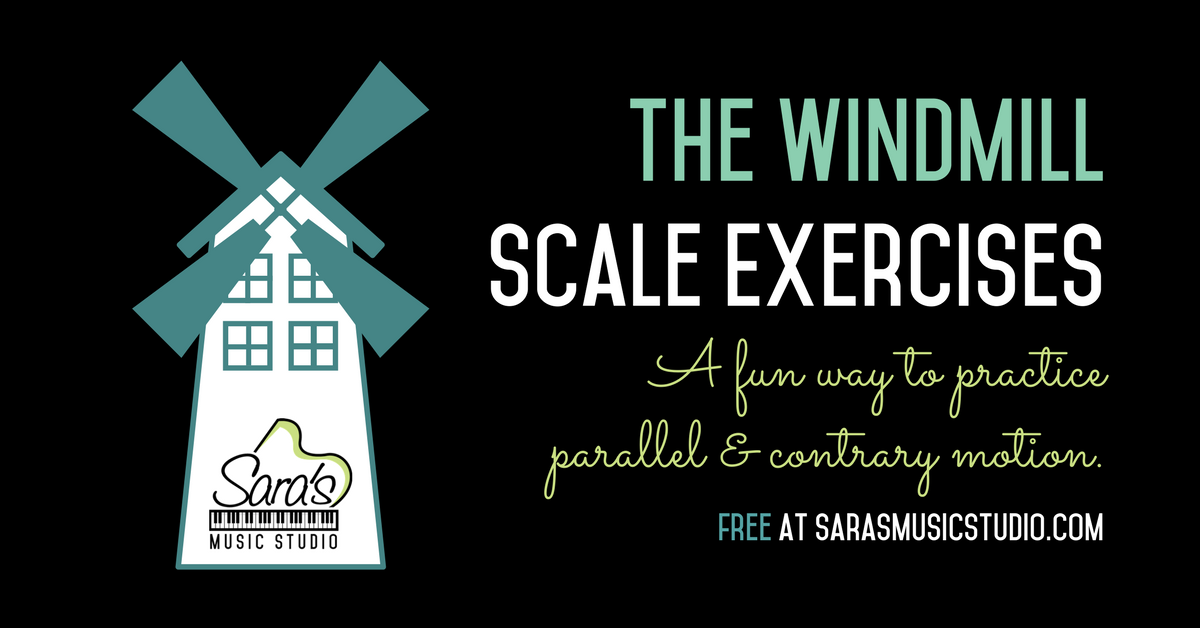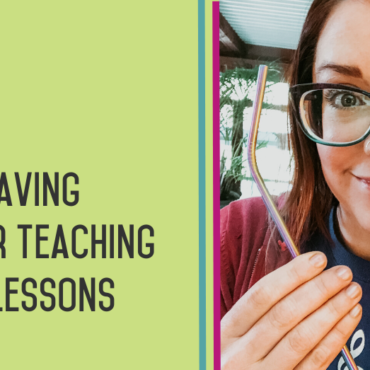Windmill Scale Exercises
Today’s post is about my favorite scale pattern. In this post, I’ll share the story behind this scale pattern and how I use it in my studio, plus I’m sharing my reference videos and an easy reference PDF so that you can use this pattern in your studio too! Download the PDF for free at the bottom of this post.
The Story
I’m going to be honest with you here… until recently, I never enjoyed teaching scales. There, I said it. Scales have always been difficult for me to teach, because as a student, I hated playing them. They just weren’t exciting to play, and they didn’t give me a sense of accomplishment upon completion.
It’s not like I was going to break it out to my friends and say “Hey! Watch me play this E major scale for two octaves! How cool is that?”
Scales just aren’t that exciting.
So I avoided scales as a student. And… again, being honest here: while I’ve always taught scales to my piano students, until the past year, I wasn’t able to garner any excitement from them about playing scales either.
Or rather… they weren’t that exciting until I stumbled upon a pattern that was way different than your normal single or double octave scale. I first learned this pattern from a fried of mine, Kevin Shields, during a vocal workshop in 2016. He mentioned something about a “windmill” scale, and I was intrigued.
“What’s that?” I asked him. He showed me. It was a combination of parallel and contrary motion scales that covered a full four octaves, and it just looked cool.
A few months later I actually stumbled across the pattern in a scale book by Philip A. Johnston, Scales Bootcamp. (P.S. – I love this book so much. It’s amazing. If you haven’t checked it out… please do yourself a favor and take a look.)
How I Use This Exercise
Fast forward a half year later, and I decided to try teaching this pattern to one of my students. She asked me what it was called, and I told her how I had learned about it. Naturally, it was dubbed “The Windmill” pattern in my studio.
And so The Windmill became an integral part of my teaching scales. All of my intermediate students started playing them. We play them in major, natural minor, and harmonic minor. Then I started thinking… what about a smaller version for my littles?
The Windmill Prep is a recent addition to my studio scale exercises. This is a two octave version of the exercise that is easy to teach to late elementary students . Often times I’ll actually show my young students The Windmill Prep first, and then tell them that I will teach them how to do this super awesome scale once they can learn how to play single octave scales in parallel and contrary motion.
(Making a scale pattern seem “exclusive” and “cool” goes a long way with young kids!)
In the past few months, I started talking about these scales in the Upbeat Piano Teacher Mastermind Group. Little did I realize how many teachers would be interested in learning how to do these! Nicola Cantan even mentioned it in a recent scales webinar that’s now a part of the Vibrant Music Teaching workshop library.
Normally I teach this scale pattern by rote, and then we chart out the scale in a student’s assignment sheets. Sometimes we draw them out on our dry erase pockets. Whatever it takes to make that pattern stick! Once you master the pattern of parallel and contrary movements, then it becomes a mental game of figuring out each new scale and learning the “map” of each key so that you know what it looks like and feels like under the fingers.
Dante had fun charting out his Windmill 😉

Once I teach it by rote, then I’ll show the student what it looks like on paper! That normally blows their minds, because it looks really HARD when you see it written out! A word of advice: don’t show this pattern on paper to your student first. It’s so much easier to teach this by rote than it is to present it on the page. In my 8 months of teaching this pattern, I’ve never once shown it to a student before teaching it. That’s just my personal preference. Teach as you wish!

Sample of the Windmill PDF
The written out version can be a useful reminder for students who are unsure about scale fingering. We’ll often circle/highlight where the “overs” and “unders” occur. The PDF includes the following:
- The Windmill (Full 4 Octaves) in regular rhythm and rhythmic variation.
- The Windmill Prep (2 Octaves) in regular rhythm and rhythmic variation.
The best part?
My students LOVE playing these exercises. In fact, I have yet to find a student who DOESN’T like playing scales with this pattern! I think it’s because of how impressive they look and sound. I hope that your students will enjoy this pattern too!
You can download my free PDF of this by entering your name and email below.





